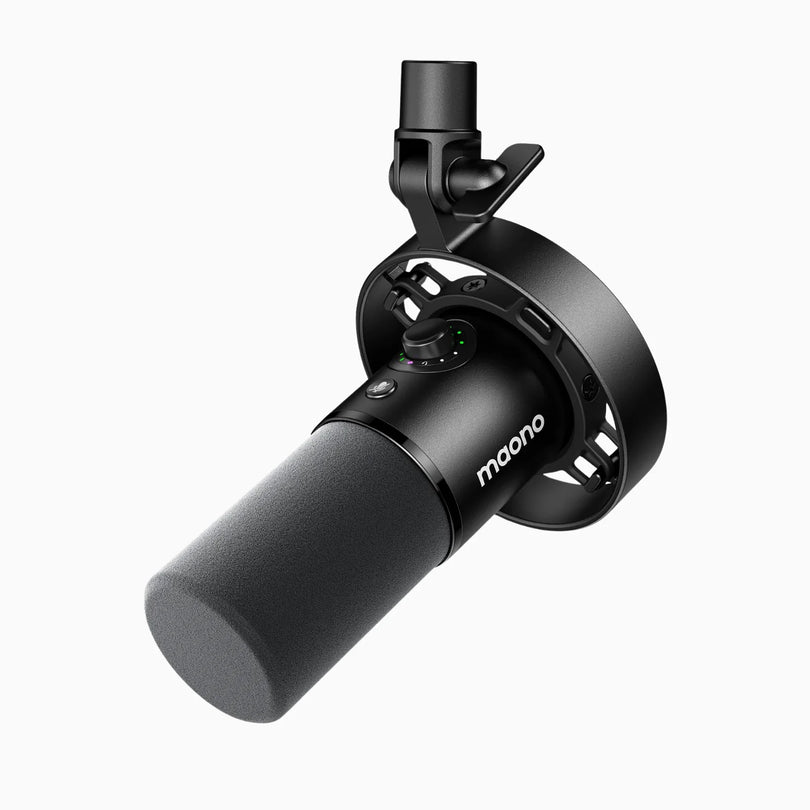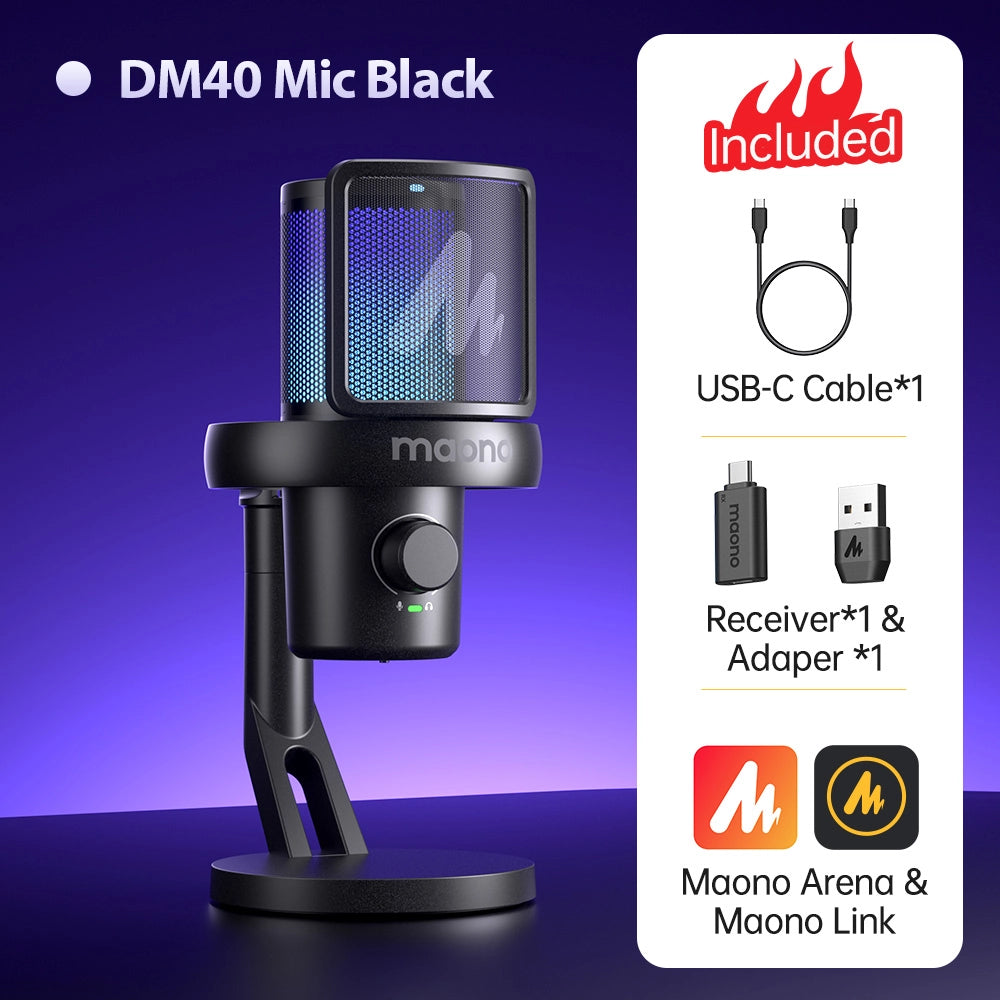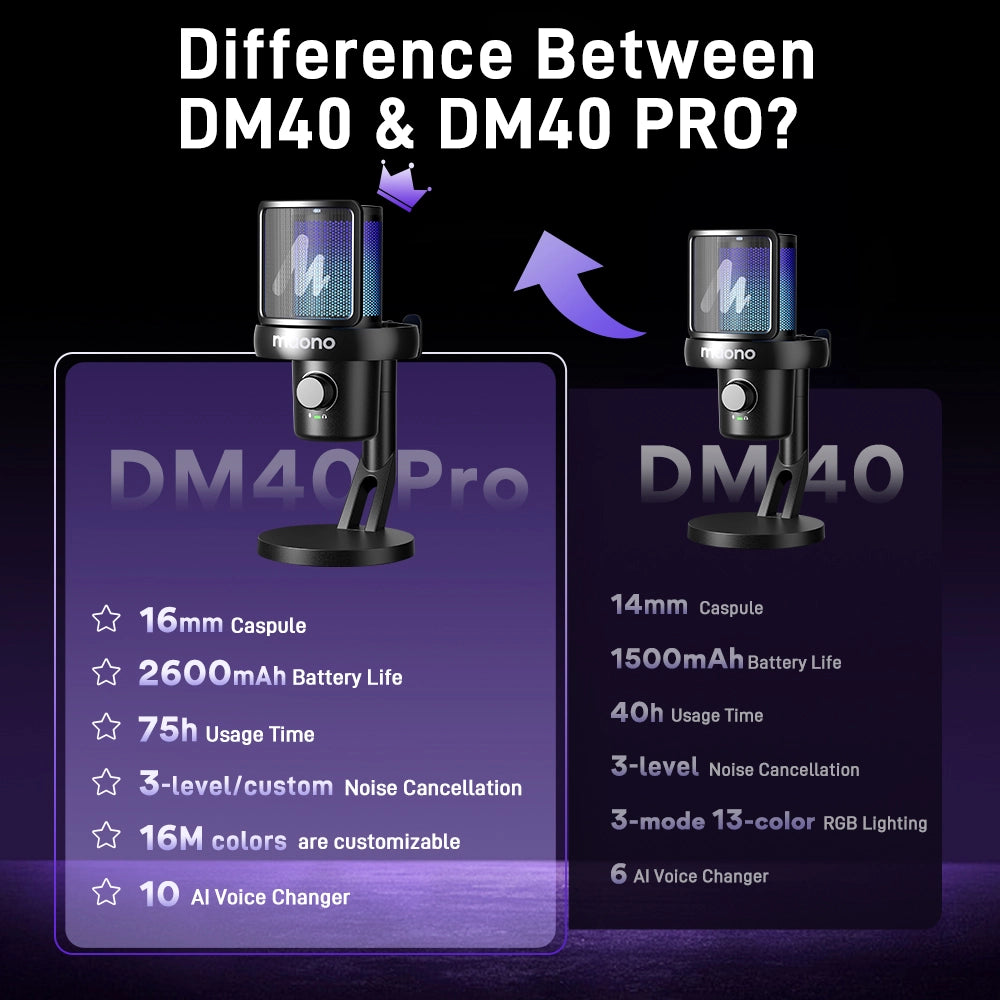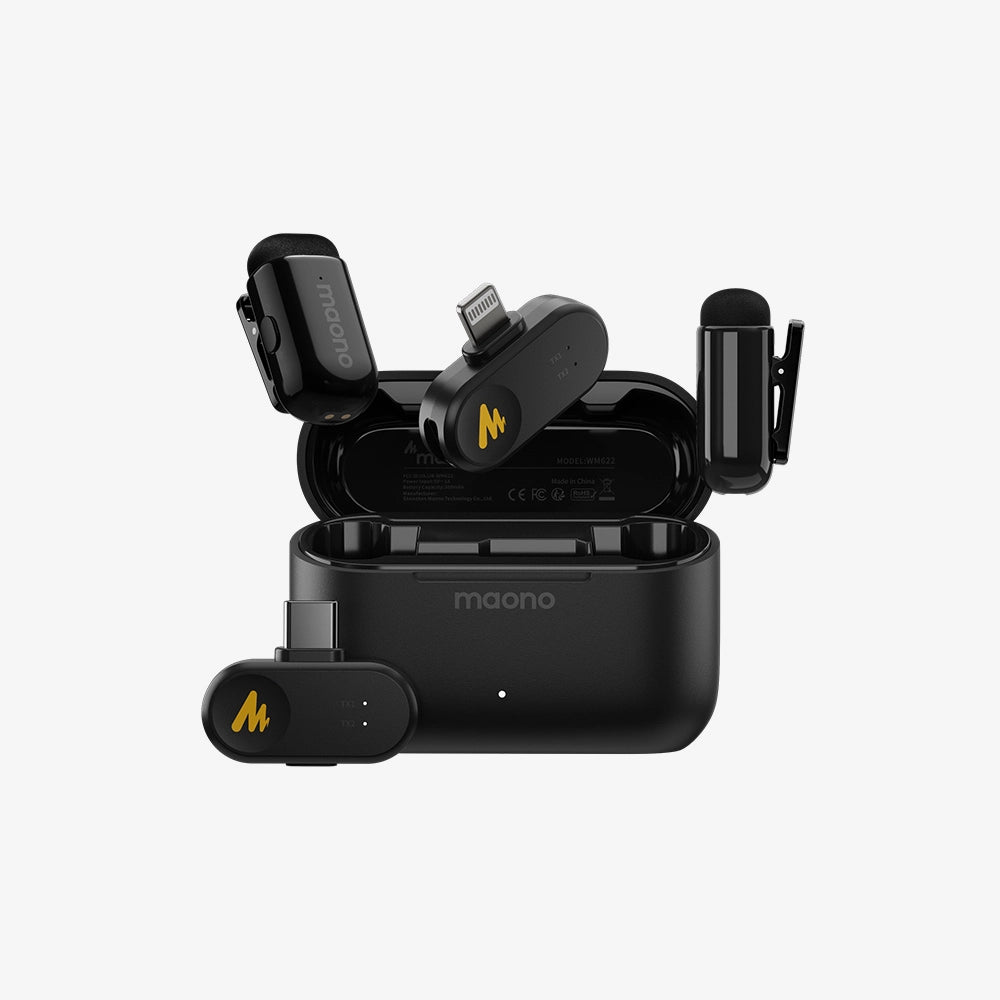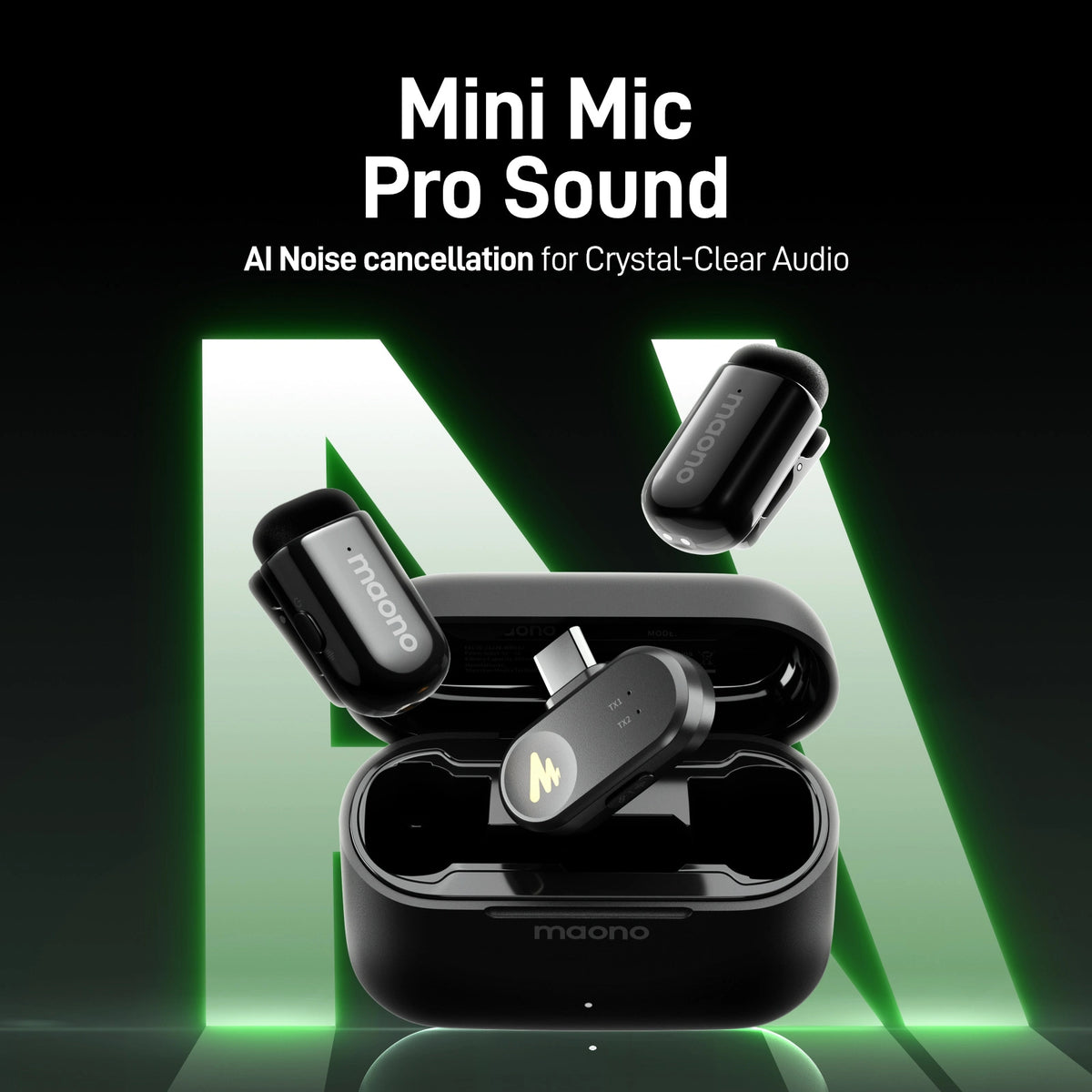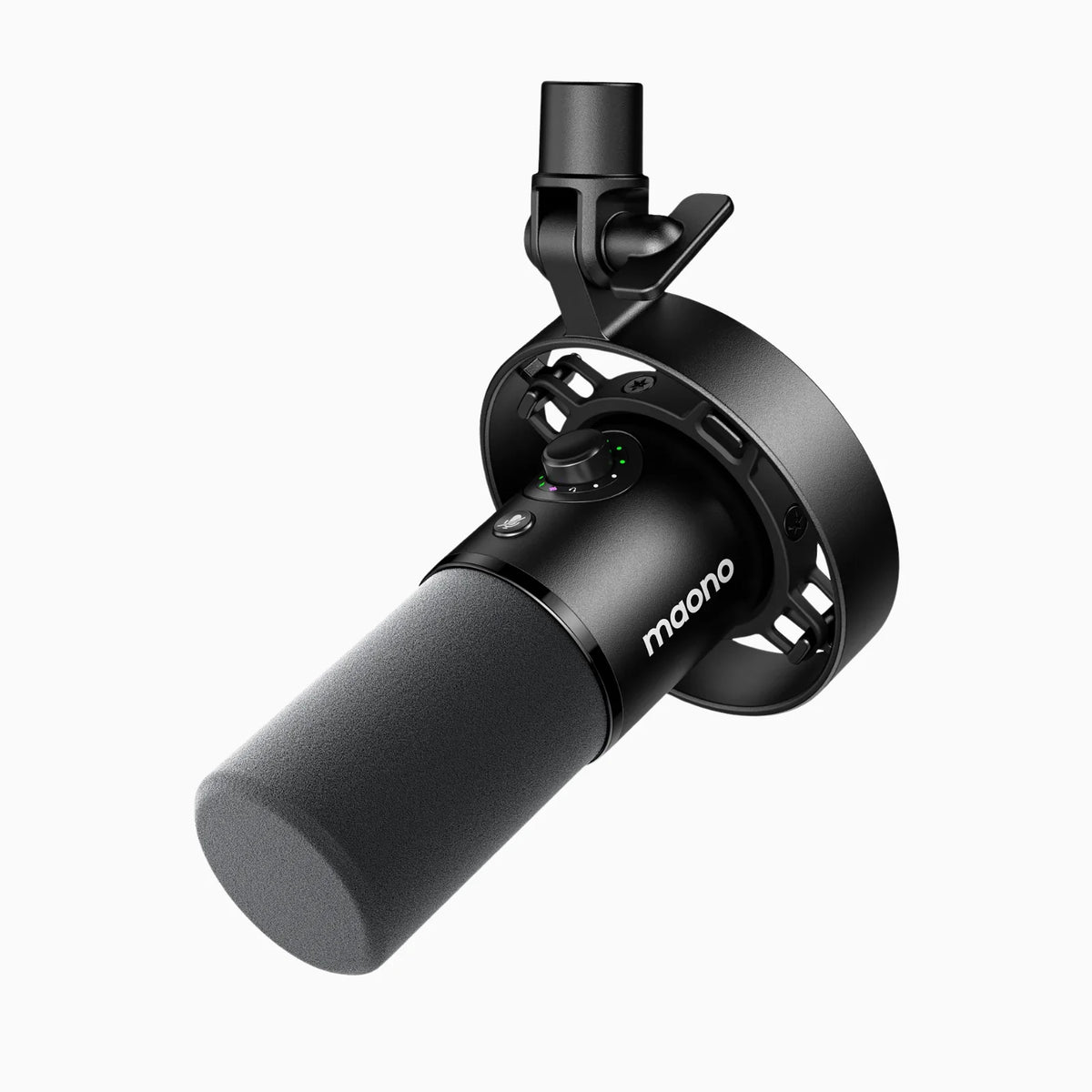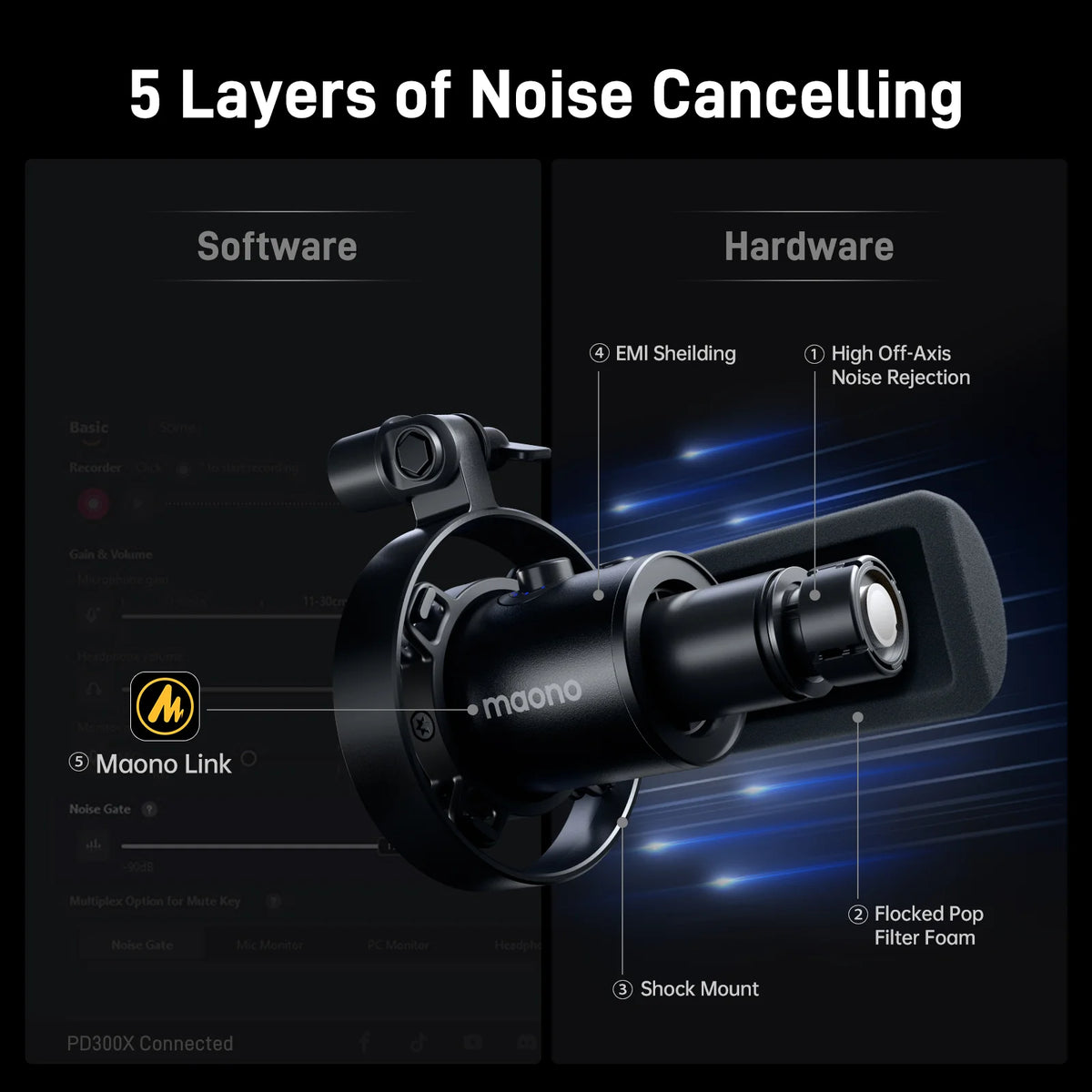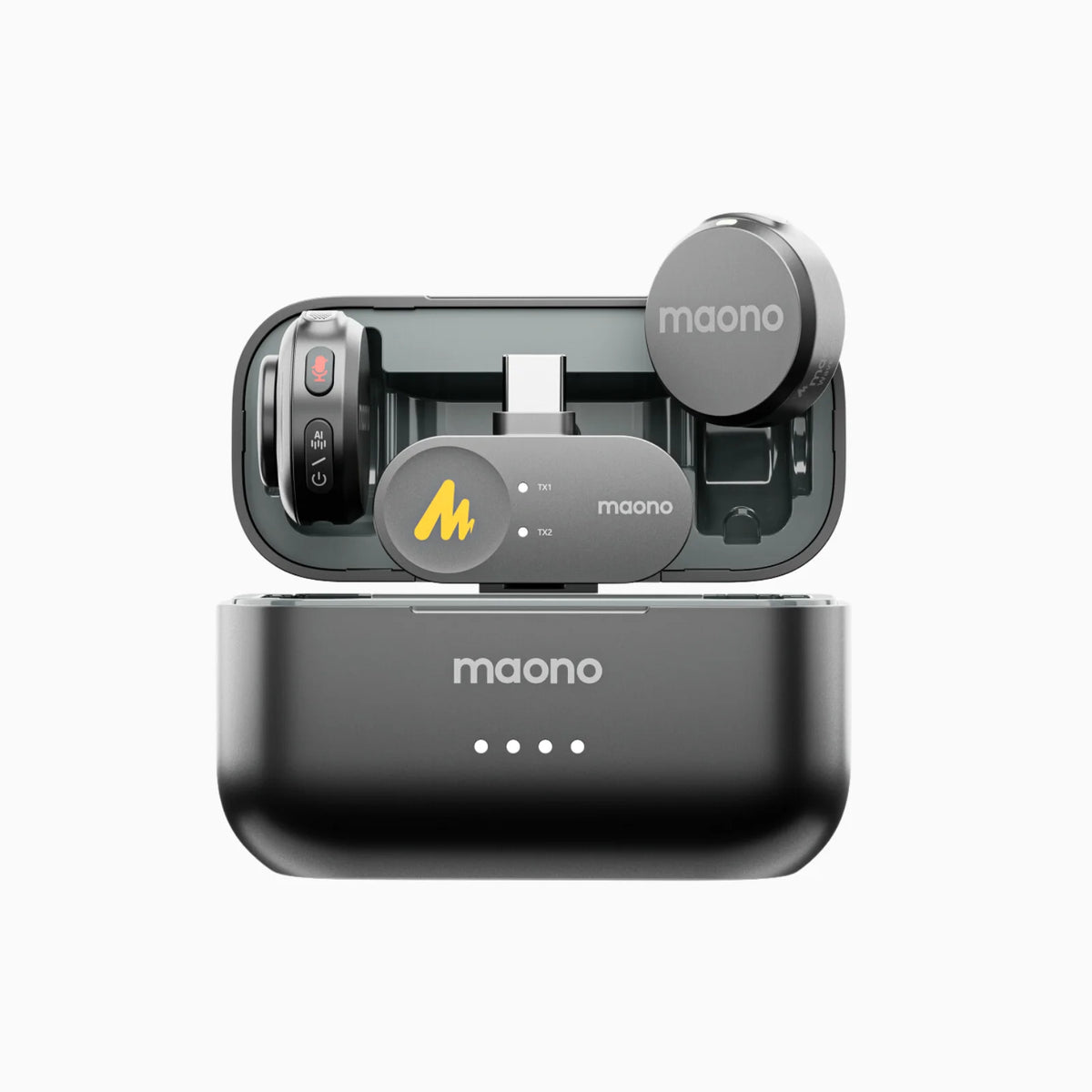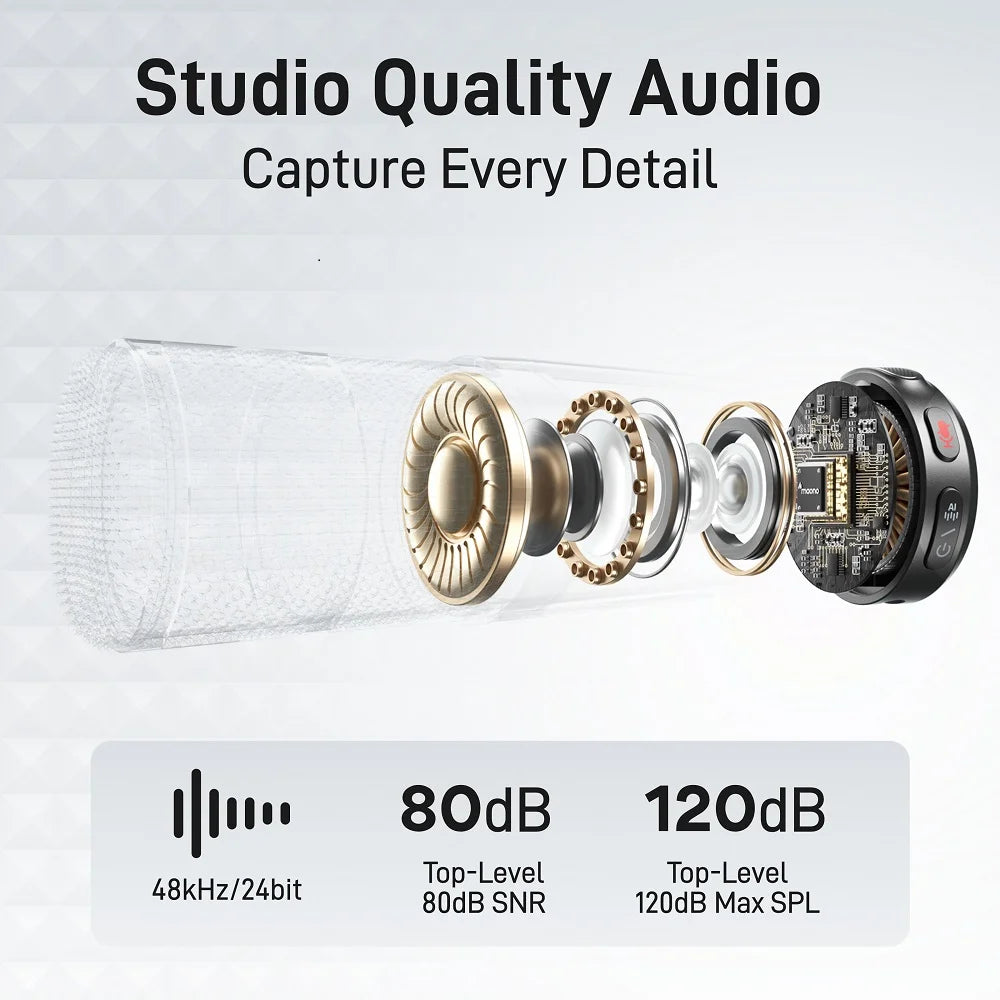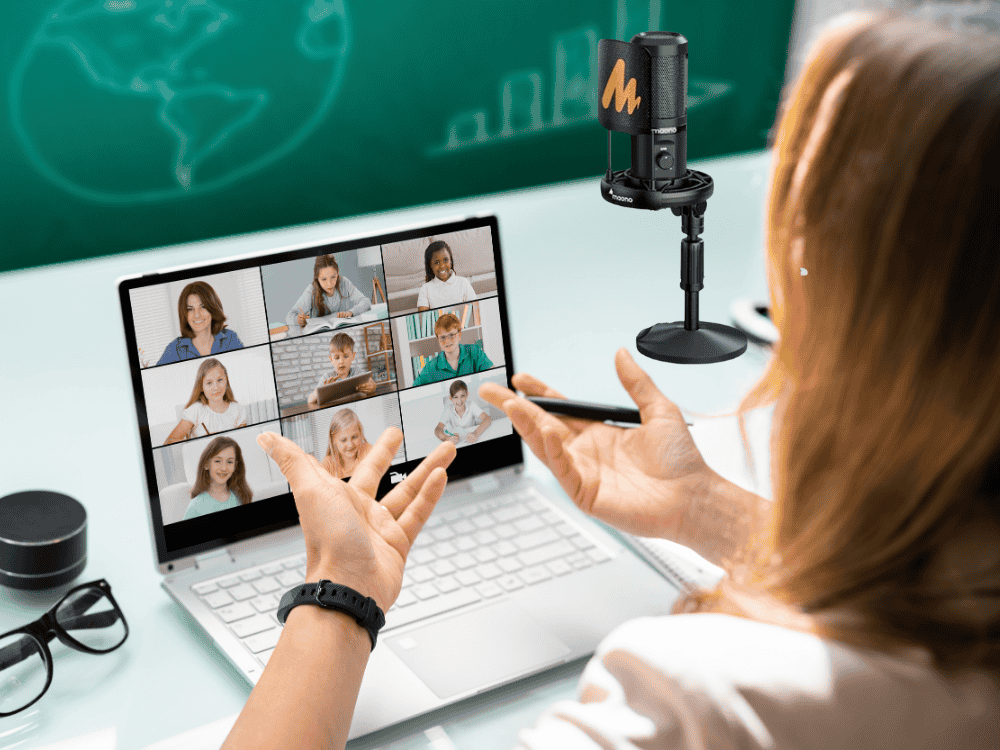Since the establishment of the Maono, its USB microphone series has been favored by many users from different countries. Among them, the Maono microphone AU-A04 or simply, A04, a USB condenser microphone, has become the best mic for laptop users, earning the title of “Best Seller” on Amazon in the United States, Canada, and several other countries.
The products of the Maono USB microphone series have been recommended by many international media. For example, the Maono microphone AU-A04 and PM422 USB microphone have been recommended by well-known media such as Venture Beat and MusicRadar.
We appreciate the users' continued support. Based on their feedback and suggestions, Maono has created this USB microphone for laptop user guide to help users resolve any issues they encountered while using our best mic for laptop models.
Troubleshooting and Optimizing Your USB Microphone for Laptop: Solutions for Common Issues and Setup Tips
This user guide is mainly divided into 5 parts, they are these 5 common issues and how to solve them:
1. PCs do not recognize the USB microphones
2. PCs recognize the USB microphones but there is no sound
3. Noise problem of USB microphones
4. Tutorial for Equalizer, an audio enhancement&noise reduction software
5. USB microphone setup guide for Linux system
I hope the following guide can help you.
1. PCs do not recognize the USB microphones

Method 1: Disconnect the USB microphone from the PC and restart the PC
You can disconnect the USB microphone from the PC and restart the PC. After restarting, reconnect the USB microphone to the PC, and if it is not recognized by that particular USB port, try another port. If that microphone is recognized by a different USB port, there may be a hardware problem with one of the USB ports. It is probably something else if none of the USB ports recognize the microphone, so read on.
If the above method does not solve the problem, please turn off the laptop for half an hour (desktop computers can be turned off and unplugged the power cable), wait 15 minutes, and try again.
Method 2: Change the Property of the USB Root Hub
First, open “Device Manager”, expand “Universal Serial Bus Controllers”, and right-click “USB Root Hub”-“Properties”.
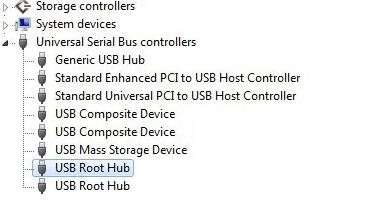
Second, click the “Power Management” tab, and uncheck the “Allow the computer to turn off this device to save power” box. If there is more than one USB root hub listed, you need to repeat the above steps for each one and then restart your PC.

Reconnect the USB microphone and check if it is recognized. If not, go back to the Power Management tab for each and check the box.
Method 3: Uninstall Hidden Devices
In the default situation, Device Manager does not display all devices installed on the system. Some hidden or ghost USB devices may conflict with the current USB microphone. To show hidden devices in Device Manager, first, open a command prompt and then enter the following two commands:
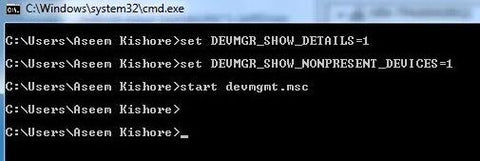
set DEVMGR_SHOW_DETAILS=1
set DEVMGR_SHOW_NONPRESENT_DEVICES=1
start devmgmt.MSc
After the Device Manager is loaded, you need to click “View” and then click “Show Hidden Devices”.
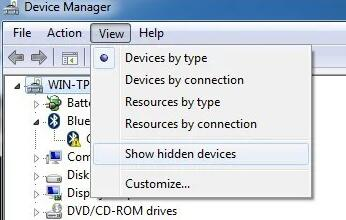
Then, expand “Imaging Devices”, “Universal Serial Bus Controllers”, and “Unknown Devices”. If you see a grayed-out device or an unknown device, right-click on it and select “Uninstall”.
Method 4: Download the Audio Driver Provided by the Device Manufacturer’s Website
If the above steps do not solve your problem, visit the device manufacturer’s website and install the latest audio/sound drivers for your device. Below is an example of a sound device manufacturer’s driver download page.
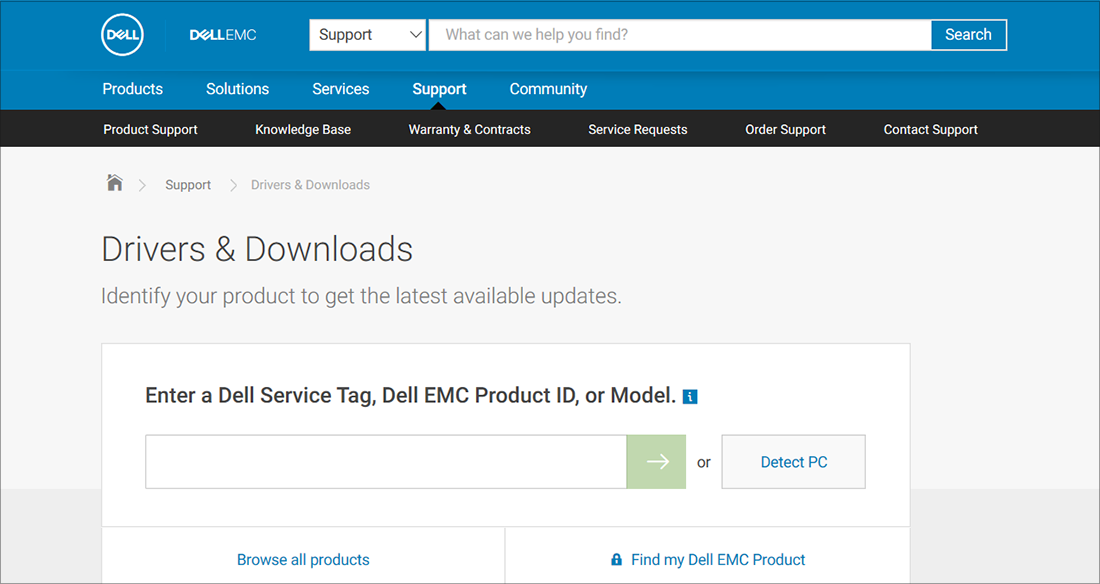
If the audio worked before running the Windows update and it doesn’t work now, please roll back the audio driver.
Here are the steps:
1. Enter the Device Manager in the search box on the taskbar and select it from the results.
2.Select the arrow next to the “Sound, Video, and Game Controllers” to expand it.
3. Right-click the listing for your USB microphone, and select “Properties”.
4. Click the “Driver” tab, and then select “Roll Back Driver”.
Connect your mic to another PC, and if it does recognize the mic correctly, then reconnect it to the original PC. If the microphone is only recognized on the other PC, after connecting the USB mic to it successfully, then eject the USB correctly from that PC. The mic may suddenly start being recognized on the original PC.
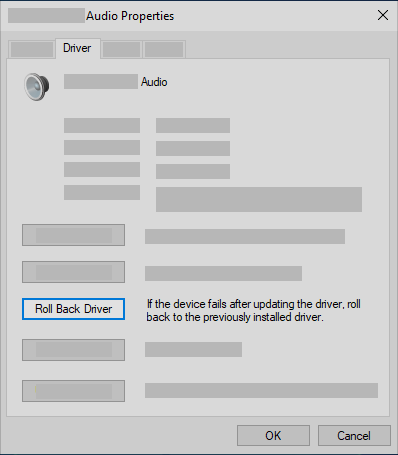
2. PCs recognize the USB microphones but there is no sound
Method 1: Check the Speaker Output
If there are multiple audio output devices, check that you have selected the right one.
1. Select the speaker icon on the taskbar.
2. Select the arrow to open the list of audio devices connected to your PC.
3. Check the mute status.
4. Check if your audio is playing to your preferred audio device, such as an earphone or a speaker.
Method 2: Check Cables, Plugs, Jacks, Volume, and Speaker and Headphone Connections
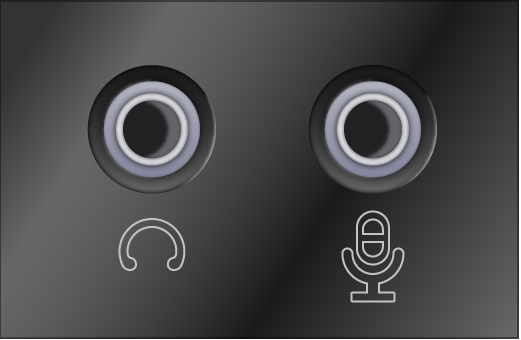
1. Check for loose wires at the speaker and headphone connections. Please remember to plug in all the wires.
2. Make sure the speaker is turned on and check the volume level.
3. Make sure the mute setting is not on and turn up all volume controls. (Keep in mind that some speakers and applications have volume controls. So check them all.)
4. Try to connect the speaker and headphones to different USB ports.
5. The speaker may not work when the headphones are connected to the PC. Unplug the headphones and see if it helps.
Method 3: Check the USB Microphone
The Settings app in Windows 10 has several options to disable your microphone system-wide and in all applications. Desktop applications will not be able to receive microphone input if your webcam is disabled in Settings.
App permissions in Settings-Privacy typically only affect new Store apps (also known as Universal Windows Platform apps or UWP apps). However, the webcam and microphone options also affect desktop apps.
If your microphone is not working, go to “Settings”-“Privacy”-“Microphone”. Then check that it says “Microphone access for this device is on”. If it shows “off”, please change it to “on”. If access is off, Windows and all applications on the system will not be able to access the audio from the microphone.
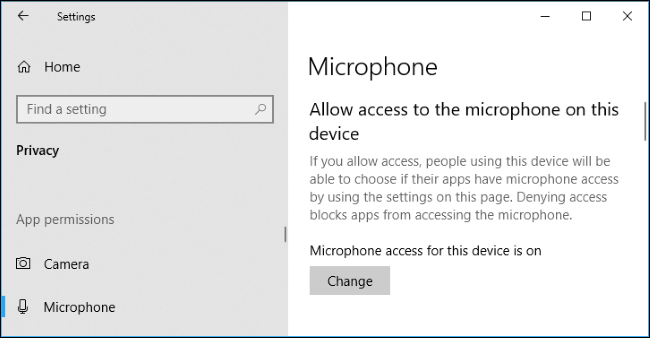
Next, please remember to set “Allow apps to access your microphone” to “on”.
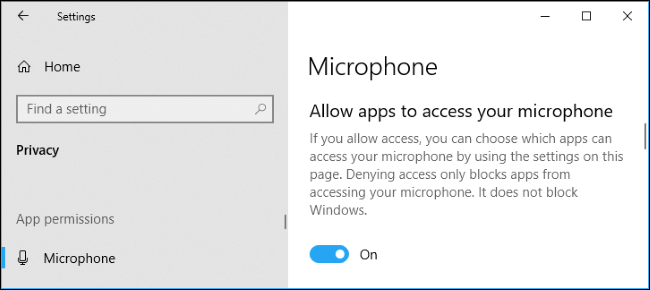
Under “Choose which apps can access your microphone”, make sure that the application that needs to access your microphone is not set to “off”. If it shows “off”, please change it to “on”.
Only new applications from the Store are displayed here. However, the legacy desktop applications from outside the Store will never be displayed in this list and will always have access to your microphone as long as the “Allow apps to access your microphone” is set to “on”.
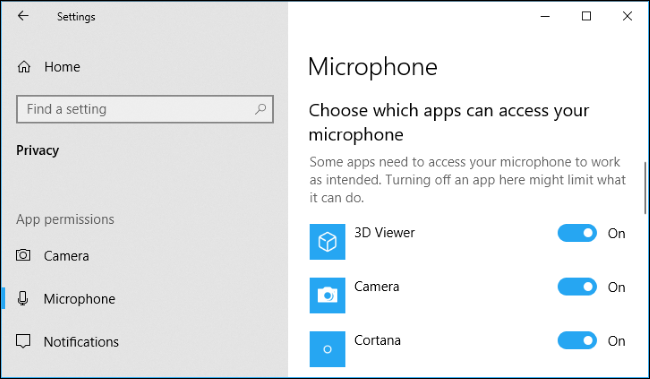
Method 4: Select to replace Sample Rate and Bit Depth
1.Right click on the Sound icon and click the “Sounds”.
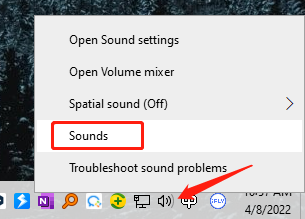
2. Click the “Recording”-“Properties”-“Advanced”.

3. Select to replace sample rate and bit depth and then test to see if it works.
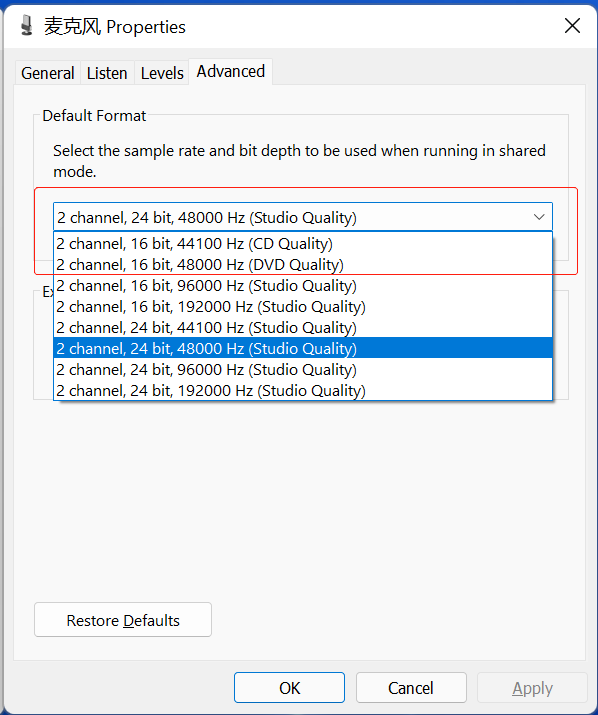
Method 5: Adjust the sound level
1. Right-click the Sound icon and click the “Sounds”
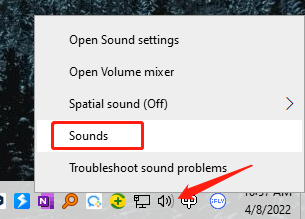
2. Set the microphone as a default recording device in the “Recording” of the “Sounds” setting.
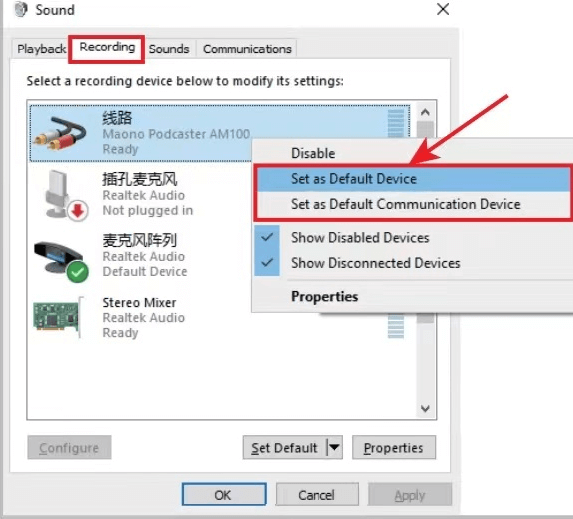
3. Double click “Maono Microphone” and go to “Properties”, then select “Levels” and set it to 100.

Method 6: Check sound settings
Make sure your audio devices are not muted and not disabled.
1. You need to right-click the Speaker icon on the taskbar, then open Volume Mixer.
2. You will see a series of volume controls for your devices. Ensure that none of them are muted. You will see a red circle with a line next to the volume control if any of them are muted. In this case, select the volume control to unmute.
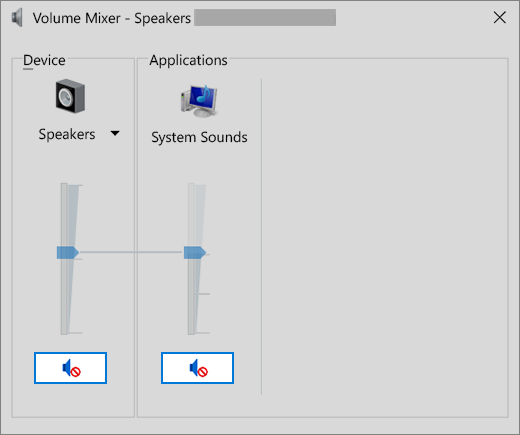
3. Make sure your devices have not been disabled by mistake. Click Start-Settings-System- Sound.
4. Next, select your audio device, and then select Device Properties. Make sure select Device Properties for both output and input devices.

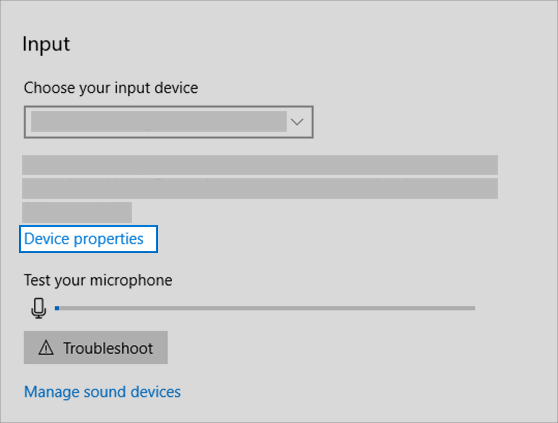
5.Ensure that the Disable check box for output and input devices is cleared.
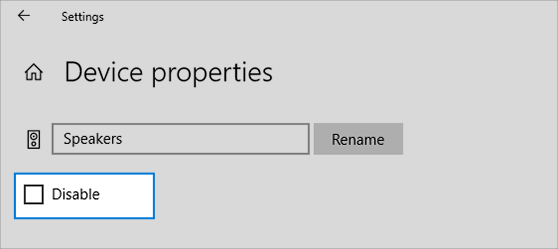
Method 7: Fix the audio drivers
Outdated or malfunctioning drivers may cause hardware problems. Be sure the audio driver is up to date, and update it if necessary. If this doesn’t work, please uninstall the audio driver (it will automatically reinstall). If this doesn’t work, please use the generic audio driver that comes with Windows. If you meet audio problems after updating, please roll back your audio driver.
A. To automatically update the audio drivers
1. Enter Device Manager in the search box on the taskbar, and then select it from the results.
2. Expand the Sound video and game controllers.
3. Right-click on the list of sound cards or audio devices (headphones, speakers, etc.), select Update driver, and then select Search automatically for updated driver software. Complete the update according to the guide.
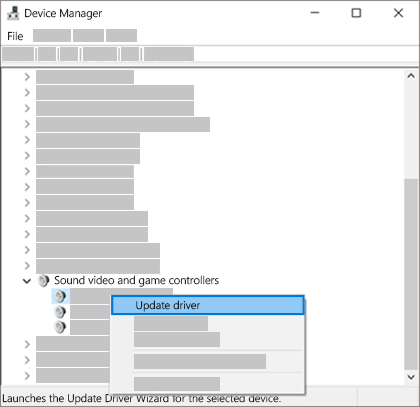
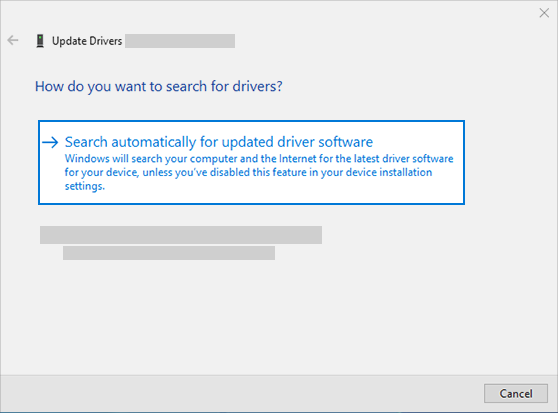
If Windows does not find a new driver, find one on the device manufacturer’s website and follow the guides. If this doesn’t work, please uninstall your audio driver.
B. To uninstall your audio driver
1. Enter Device Manager in the search box on the taskbar, and then select it from the results.
2. Expand the Sound video and game controllers.
3. Right-click the listing for your sound card or audio device and select Uninstall device. Next, select the check box of Delete the driver software for this device, and then click Uninstall.
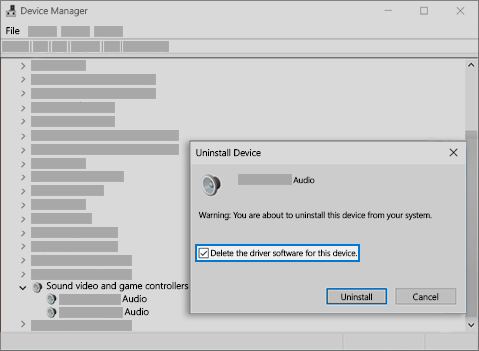
4. Restart your PC. Please remember to save your files and any other current work before restarting. This restart will let the PC to reinstall the audio driver automatically. Select “Start”-“Power”-“Restart” to restart.
If the above steps don’t work, please use the generic audio driver that comes with Windows according to the following steps.
1. Enter Device Manager in the search box on the taskbar, and then select it from the results.
2. Expand the Sound video and game controllers.
3. Right-click the listing for your sound card or audio device, then select “Update driver”-“Browse my computer for driver software”-“Let me pick from a list of device drivers on my computer”.
4. Next, select the audio device for which you want to update the driver, select “Next”, and then update it according to the guides.
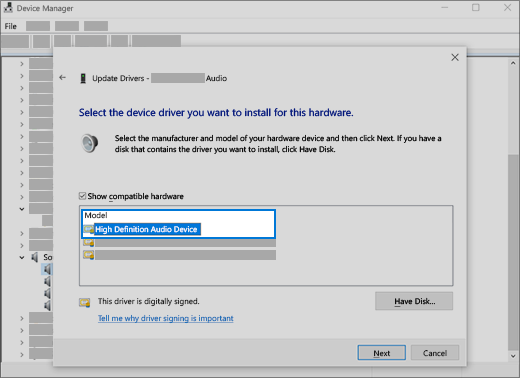
If the above steps do not solve your problem, please visit your device manufacturer’s website and install the latest audio or sound drivers for your device. The image below is an example.
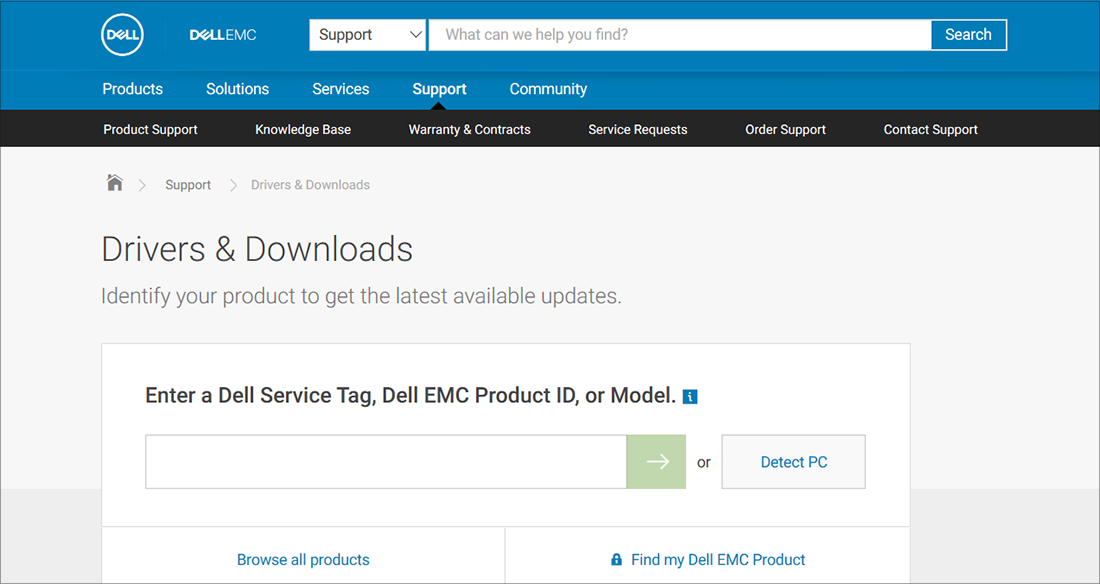
If your audio doesn’t work, but it was working before you run the Windows Update, please roll back your audio drivers.
C. To roll back the audio driver
1. Enter “Device Manager” in the search box on the taskbar, and then select it from the results.
2. Expand the “Sound video and game controllers”.
3. Right-click the listing for your sound card or audio device, then select “Properties”.
4. Select the “Driver” tab, then select “Roll Back Driver”.
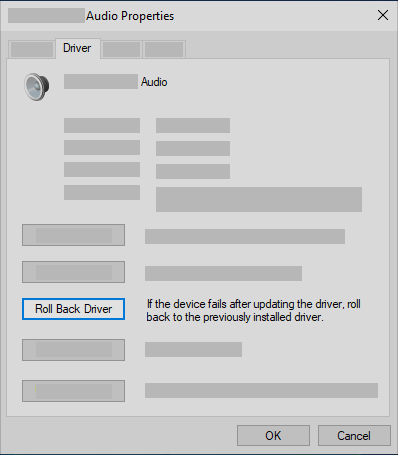
5. Follow the guides and then select “Yes” if you want to roll back the audio driver.
If rolling back the audio driver does not work or is not an option, you can try restoring your PC from a system restore point.
D. To restore your PC from a system restore point
When Microsoft installs updates on your system, we create a system restore point in case something goes wrong. Please try to restore from that point to see if it solves your sound problem. For more information, please check "Restore from a System Restore Point" in the Recovery options in Windows 10.
3. Noise problem of USB microphones
Is your microphone producing a buzzing, hissing, or humming noise? Self-noise is produced by almost all microphones. It can be very noticeable at times and very subtle at others. The buzzing, hissing, or humming sounds may become more noticeable as you add EQ, compression, and other audio effects.
A. How to Stop Your Microphone From Buzzing?
Your microphone may be making noise for a variety of reasons. Noise can be caused by cable issues, electrical issues, or ambient noise in the room.
1. Check that all cables are properly connected or replace the cables to see if the noise problem persists
If the problem persists, please read the troubleshooting guide below to assist you in determining the source of the problem.
2. Check that your recording environment is quiet
Dynamic microphones are directional and less prone to noise problems, but for condenser microphones, this is a big problem, as these types of microphones are more sensitive and more likely to pick up ambient noise.
There is a way to help you determine if your recording environment is quiet. Sometimes you don’t notice the noise, but you will start to notice the slight buzzing once you start mixing.
You can increase the gain of your microphone and start walking around the recording room with the microphone. Monitor the output using headphones. If you find a noise that interferes with your recording, turn off the equipment that is making the noise. If you can’t turn it off, try to keep the microphone as far away from the noise-causing equipment as possible while recording.
Buzzing from air conditioners, lights, fans, or some electronic devices is common. This will affect your recording.
3. Check the cables
You’ve checked your room for background noise and then turned down the preamp gain. You can replace the cables of the microphone and the audio interface with other cables and see if the noise is still there. This can be a direct solution to your audio problem and can save you a lot of time.
This a common mistake made by beginners. When you buy a new cable for your microphone, you need to check the shielding and connectors of the cable, as this is where the quality of the recording will be most affected. Another thing to keep in mind is that if your cable is damaged, it will affect the audio quality. So check your cables regularly for damage.
4. Check your audio interface and preamp or change another USB port.
With XLR mics, if you use preamps or audio interfaces, some preamps and audio interfaces may produce unhealthy signals that can cause humming or buzzing background noise. Make sure your gain is not set too high, try turning your mic gain down and see if the problem is fixed.
For USB microphones, you can try plugging the USB cable into another port on your PC to check if there is still a noise problem.
5. Check your audio software
Sometimes it can be a digital audio workstation that causes the problem. Make sure that all input controls are not too high. You can also download a free digital audio workstation like Audacity and see if the problem still exists.
6. Faulty Hardware
Nowadays, there are relatively few static hardware problems, but they may still happen. For many reasons, hardware wears out and can suddenly break or degrade. The problem is often electrical. It may have been exposed to static electricity which can cause the hardware to degrade over time, causing hardware problems.
The only way to fix the hardware is to have it repaired or replaced. If your microphone still produces a hissing sound, try recording at a low level with all the input options on your audio interface or preamp. If it doesn’t work, try replacing the microphone and see if that solves the problem.
B. The Solutions for Recordings With Background Noise
1. Noise Suppressor Plug-ins
Some digital audio workstations, such as DAW, have noise suppressor plug-ins in their software. It usually helps to remove the noise made by the microphone.
Logic Pro X has a plug-in called Noise Gate. It improves vocal clarity, removes noise, and prevents sounds from passing below a certain threshold. Signals can only be passed at audio levels above the specified threshold. If the signal is below the threshold, the signal will be blocked. This will effectively block the noise.
Another tool is the X-Noise audio plug-in from Wave. Each digital audio workstation has its own plug-in. It's a good idea to research whether your DAW has any suitable plug-ins.
2. EQ can be used to remove the hissing or buzzing sounds
There is no way to completely remove the noise without destroying the audio as it is recorded in the audio wave, but rest assured you can reduce the buzzing or hissing sounds using EQ. While this may interfere with the recording and reduce the sound quality, it is a method that can be tried.
C. Why is the microphone buzzing?
If the microphone is making a buzzing sound, it could be a loose cable connection or a faulty cable. If you have tried to replace the cable and the problem still exists, it may be a microphone that has been damaged internally. If your microphone is still under warranty, please contact us to see if it can be replaced or repaired. Sometimes it can also be a problem with your digital audio workstation, so be sure to check your software to see if it is the source of this problem.
D. Why is the microphone making the whistling sound?
This whistling sound, also called audio feedback, is due to the endless loop produced when the microphone picks up the sound from the speakers (stage monitors or PA speakers) and sends it back to the speakers for amplification and pickup, causing a specific frequency to be boosted, depending on the resonance of the room and speakers, etc.
The solutions to the whistling sound produced by the microphone:
1. Orient the speaker away from the microphone, or place it further away.
2. Lower the speaker volume or microphone gain.
3. Use a unidirectional cardioid microphone, which has a rear-repelling effect, meaning no sound is picked up from behind. Then you can use a speaker facing you in the middle of the recording room.
4. Deliberately create feedback by placing the microphone close to the speaker. When the audio feedback occurs, check the frequency on the real-time analyzer and use a channel EQ or graphic EQ to cut it.
5.You can also use a feedback reducer to improve this situation.
4. Tutorial for Equalizer, an audio enhancement&noise reduction software
1. Install the ‘Equalizer’.

2. Click the selected Microphone and speaker.
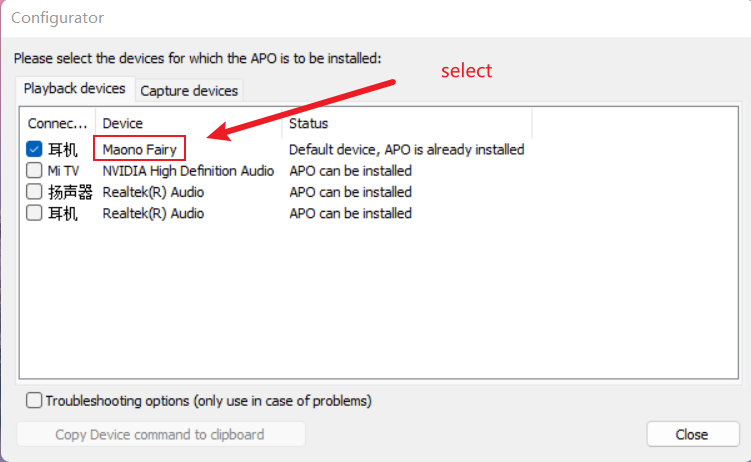
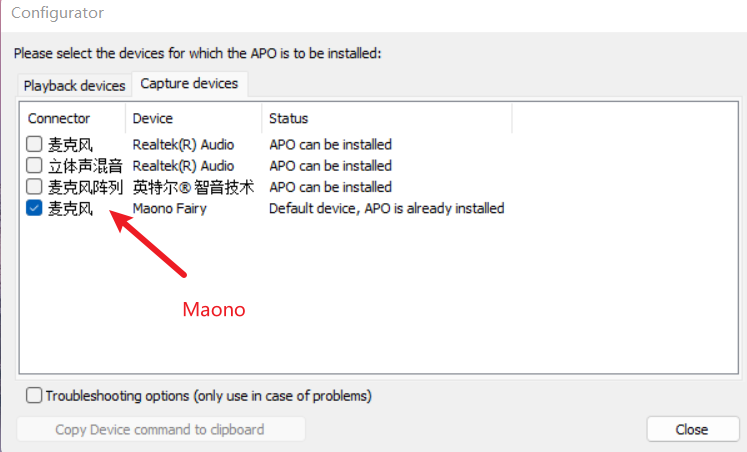
3. Restart your PC.
4. Click the ‘Configuration Editor’.
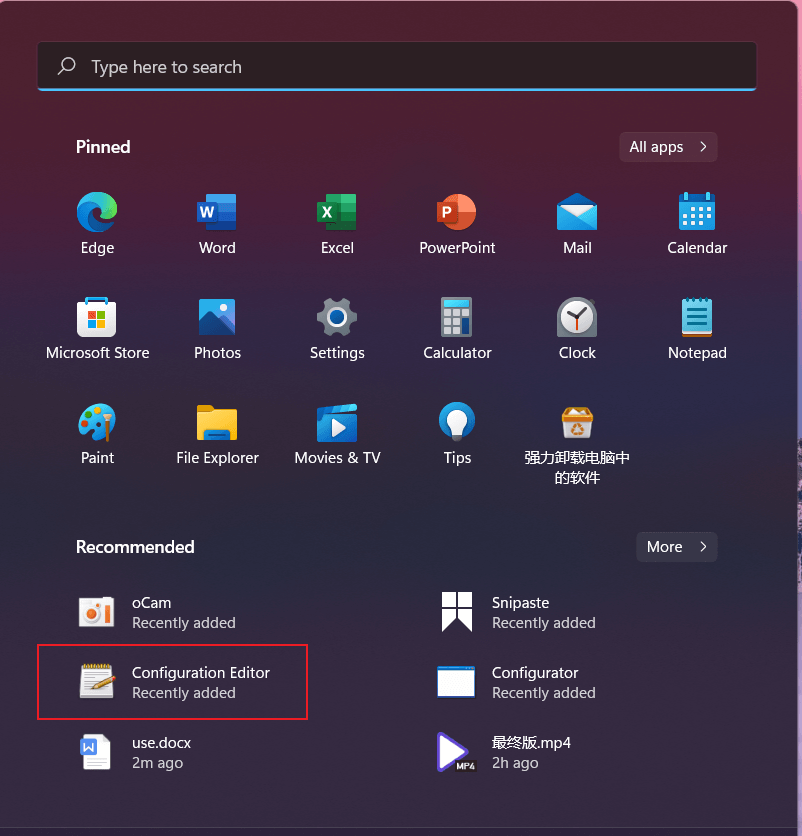
Raise your voice:
1. Add ‘Preamp (Preamplification)’ in ‘Basic filters’.
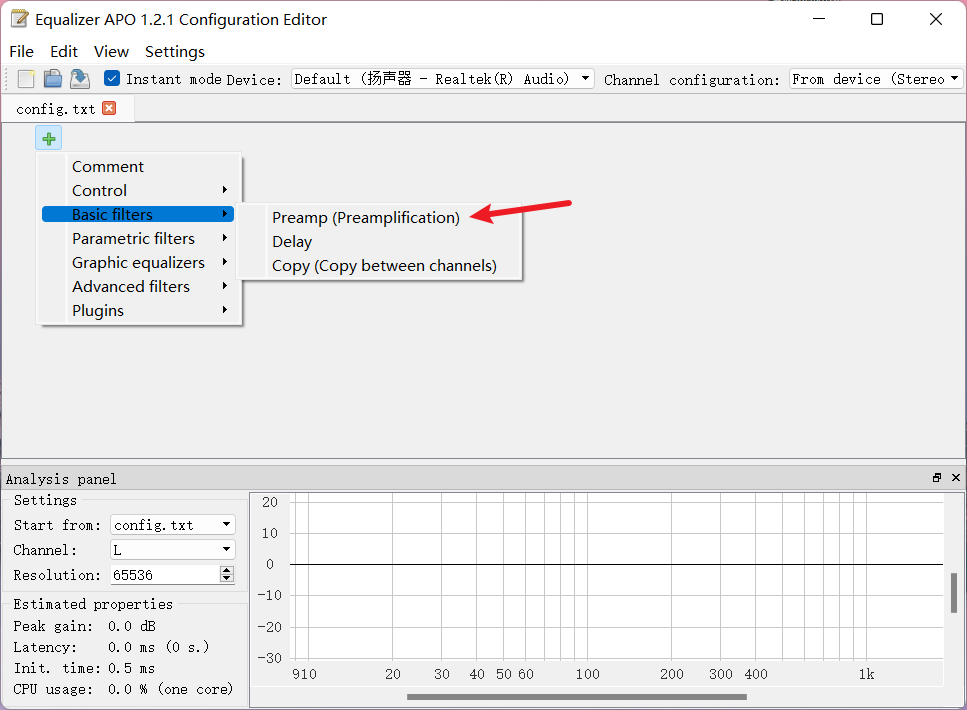
2. Please turn the knob clockwise to enhance your voice.
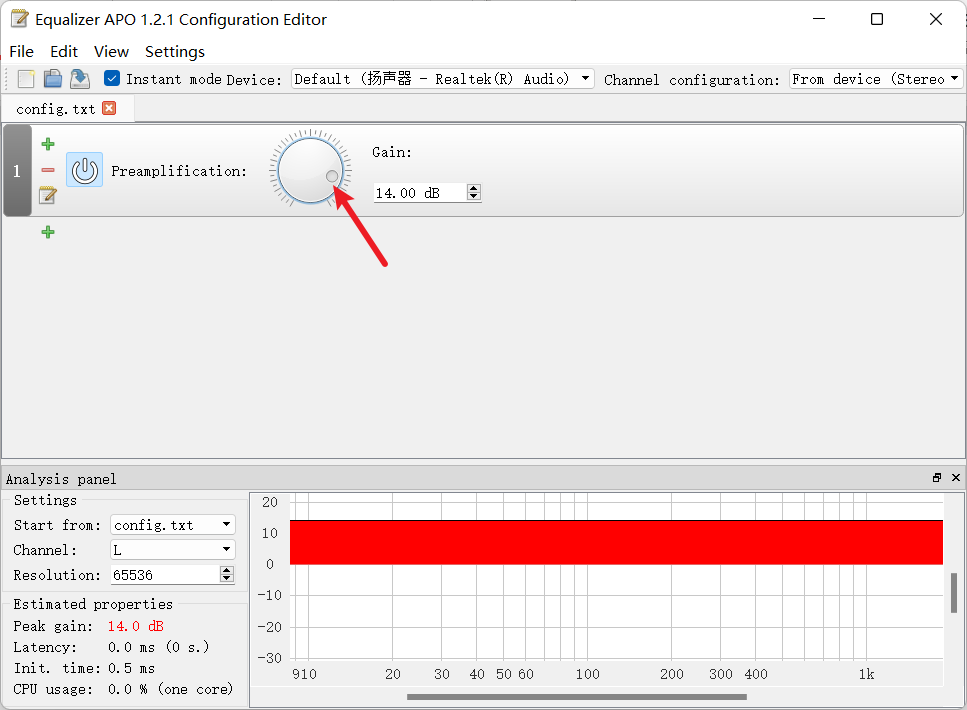
Noise cancellation for your voice:
1. Select add ‘VST plugin’
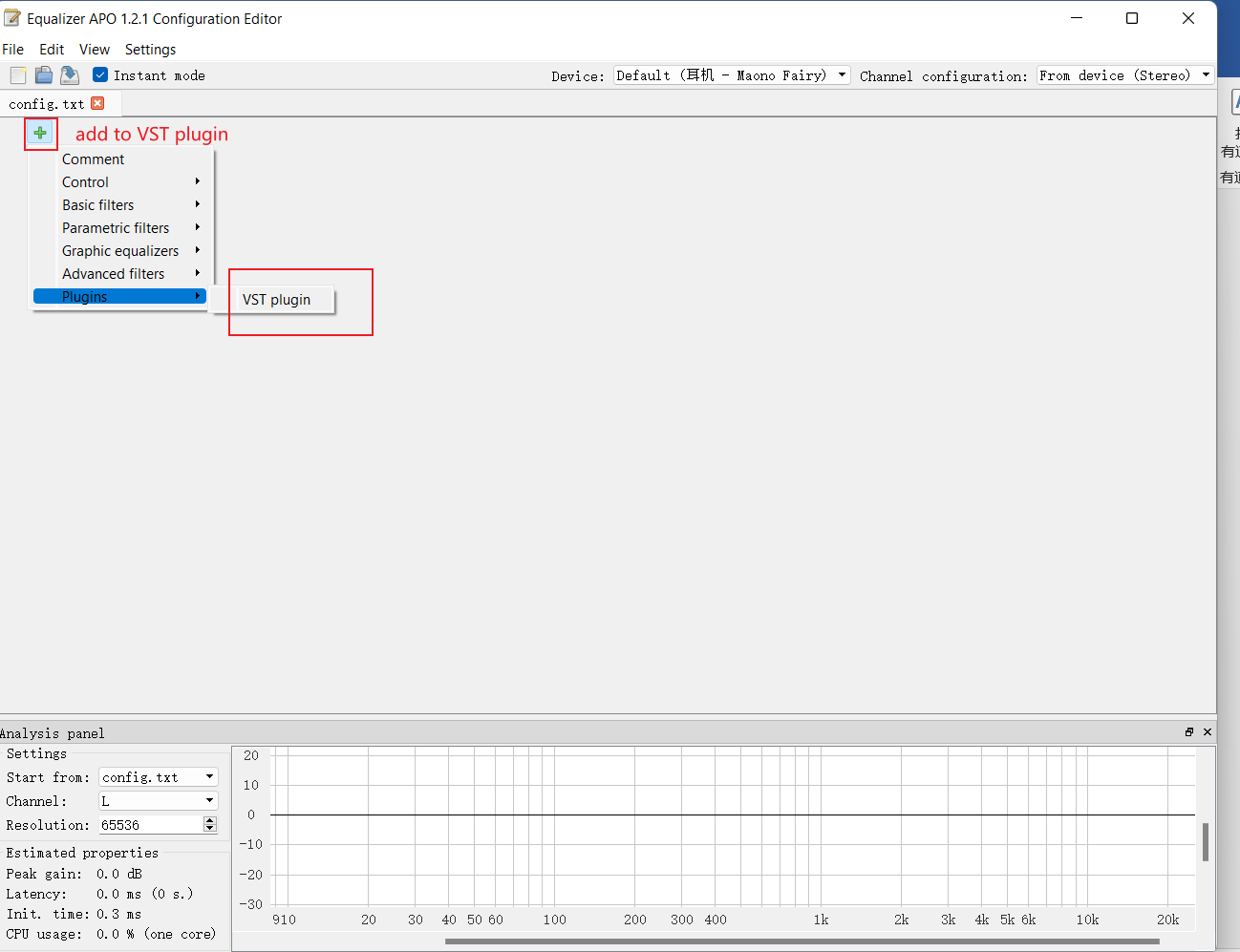
2. Click the folder

3. Copy profile to the application list
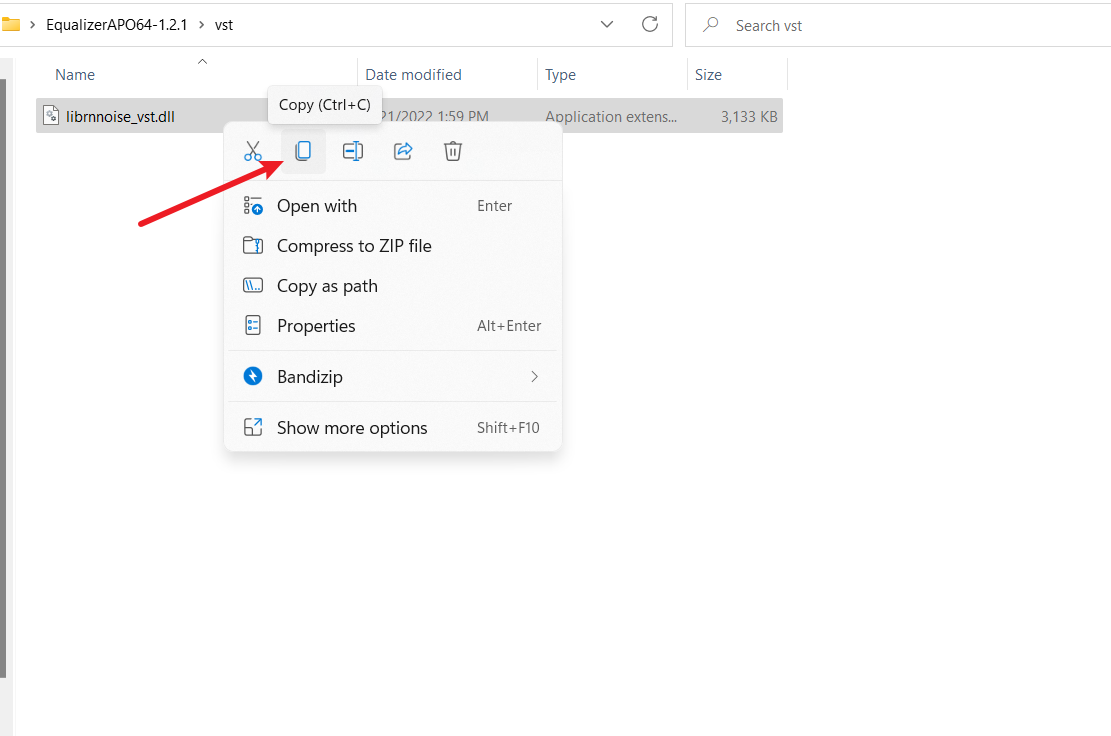
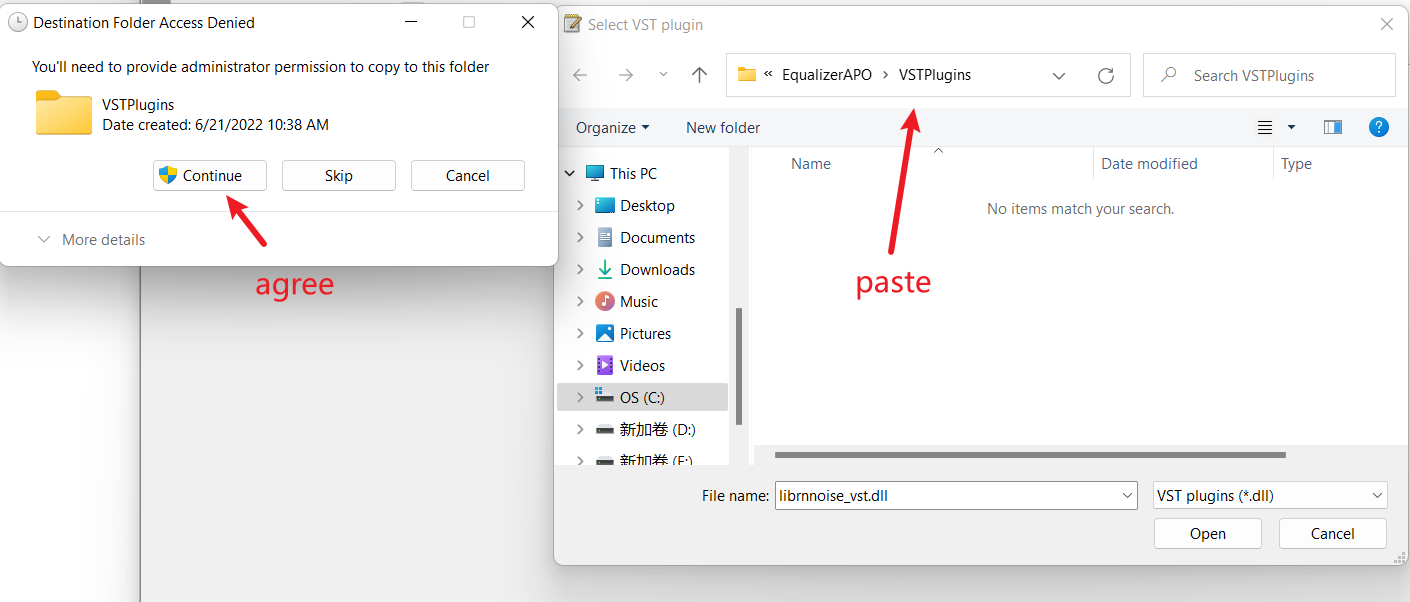
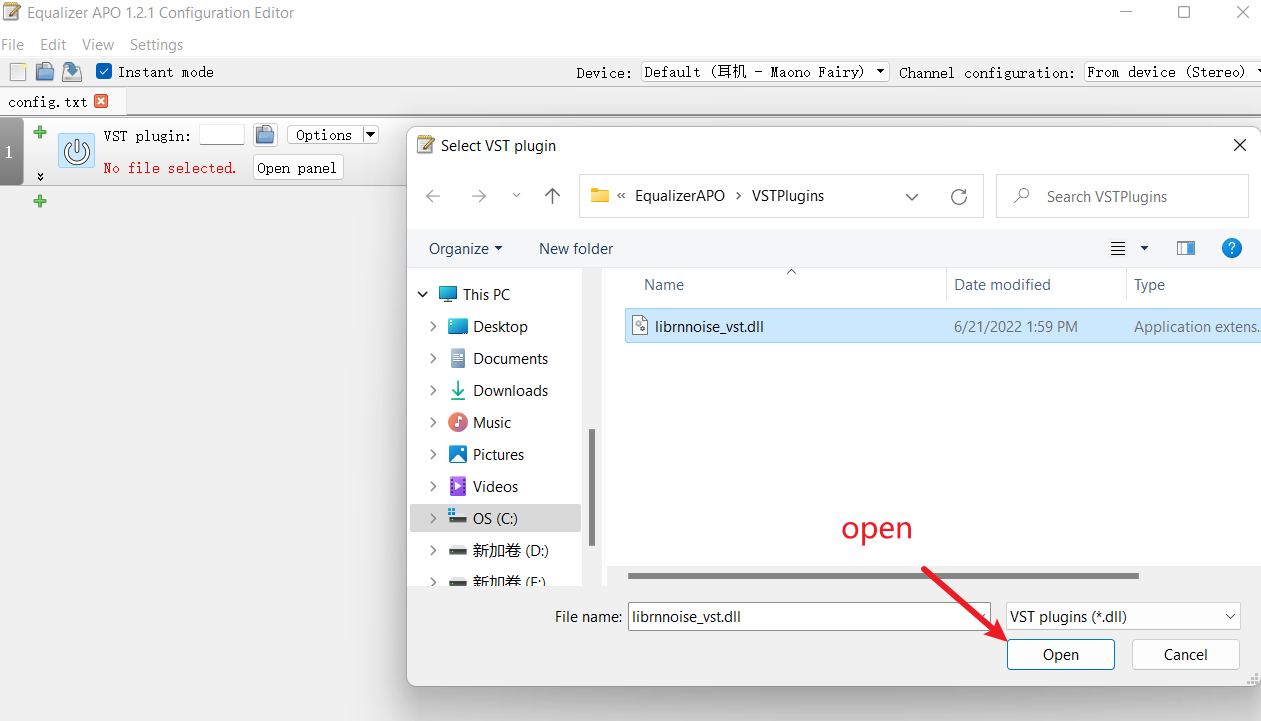
4.This is the successfully set up interface

*Both functions can be used simultaneously
5. How to set up a USB microphone on a Linux system?
*The host computer is available to use the microphone before using VMware (Linux).
1. Open ‘VMware’-then select ‘Settings’.
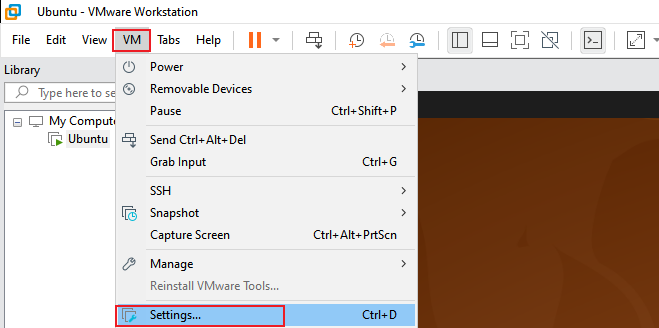
2. In the USB controller tab, choose USB 2.0 in the ‘USB compatibility’ and click ‘OK’.

3. In the sound card, select ‘Use default host sound card’.
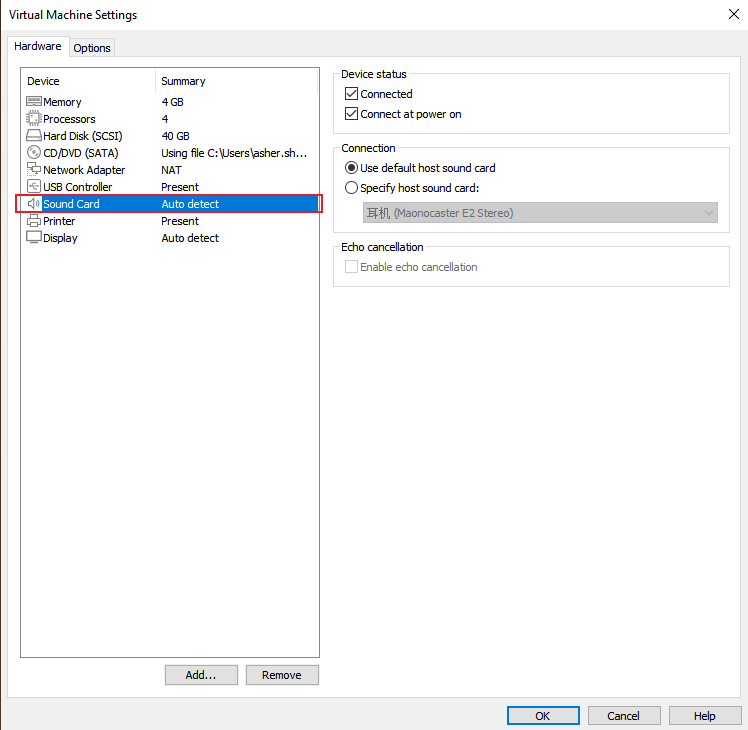
4. Output: After entering the Linux (Ubuntu) system, go to Settings and click on the Sound tab. Please adjust the volume level to 100%.
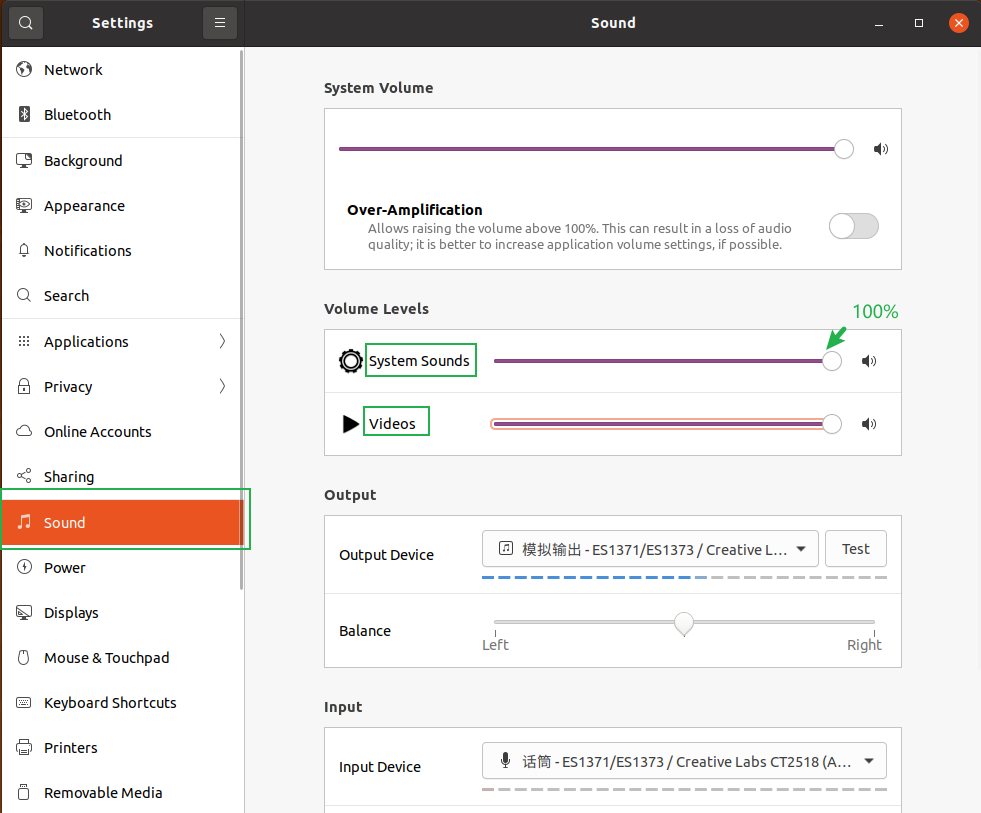
5.Adjust the Volume level to 100% in ‘Input’.

6. Speak to the microphone to test if it works.
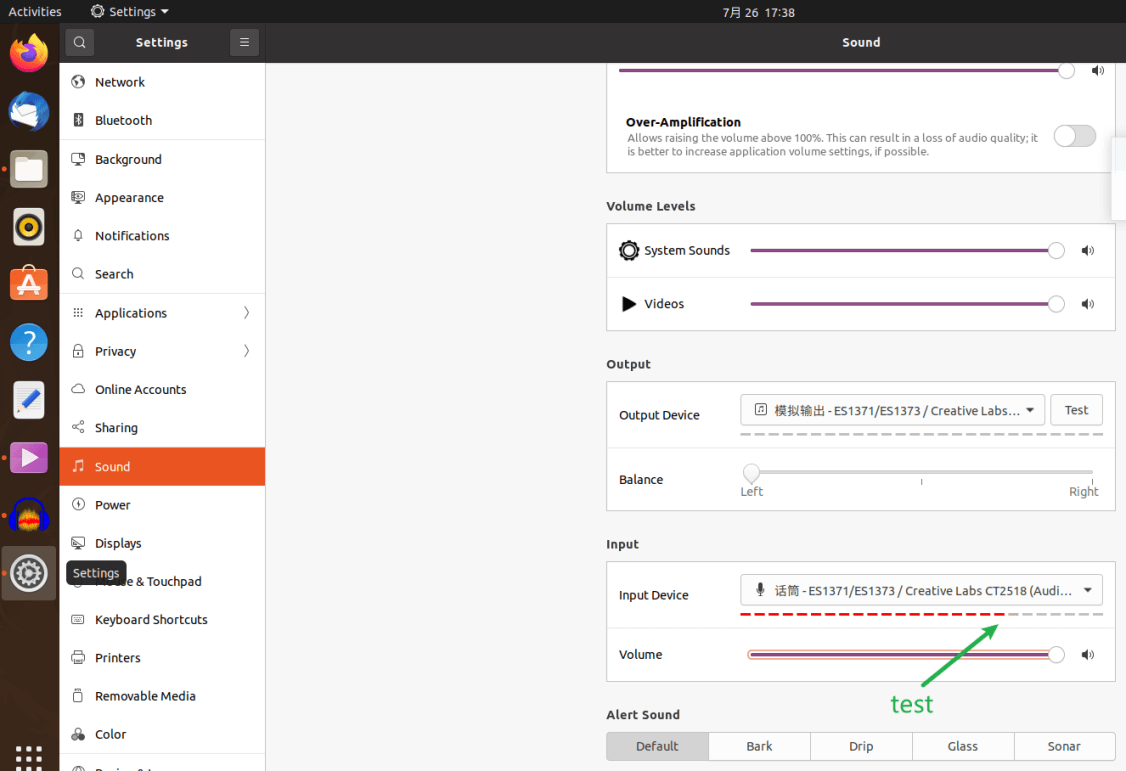
7. If it works, you can record your voice using Audacity.
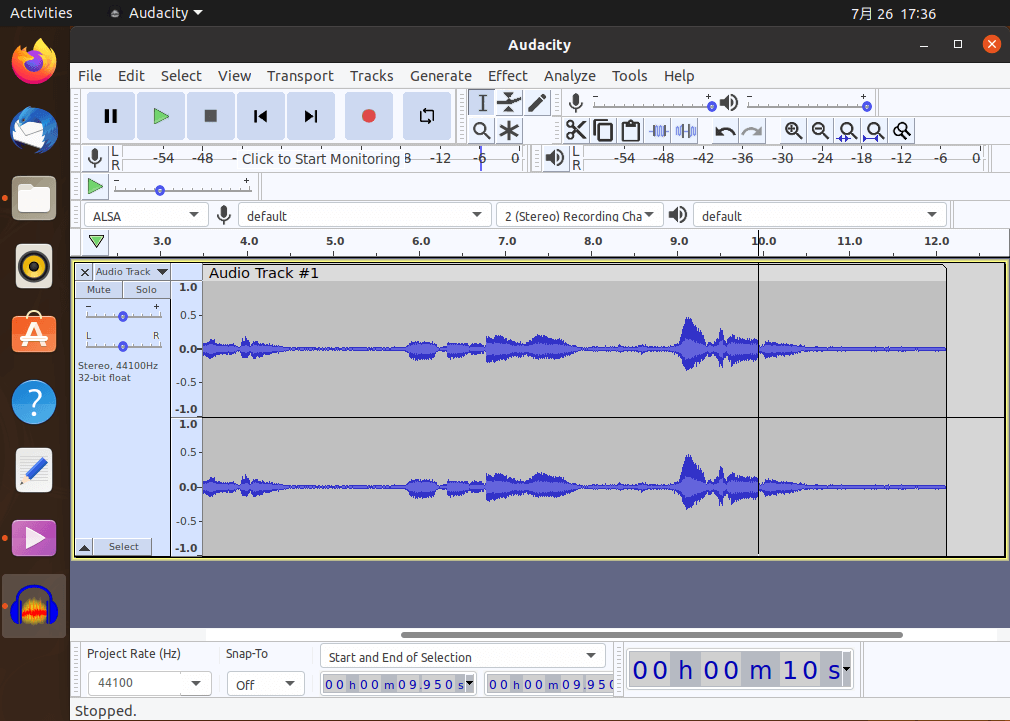
How USB Microphones Work with Laptops: A Quick Guide
USB microphones are a popular choice for laptop users due to their simplicity, affordability, and high-quality audio. Unlike traditional microphones that require separate audio interfaces or sound cards, USB microphones are plug-and-play devices. They connect directly to your laptop via a USB port, and the sound is processed through the laptop's built-in software or third-party recording applications.
When you plug in a USB microphone, your laptop recognizes it as an audio input device, and you can immediately start recording or streaming. This eliminates the need for complex setups, making it perfect for beginners, podcasters, content creators, and professionals on the go.
Advantages of USB Microphones: Best Mic for Laptops
-
Ease of Use: USB microphones are incredibly user-friendly. There's no need for external audio interfaces, mixers, or phantom power. Just plug it in, and you're good to go.
-
Portability: Since they don't require additional equipment, USB mics are ideal for laptop users who need to record or broadcast in different locations. They're compact and easy to carry.
-
Cost-Effective: USB microphones tend to be more affordable than traditional XLR mics (which require additional gear like mixers and audio interfaces), making them a great choice for budget-conscious users.
-
Good Sound Quality: Many USB microphones, like the Maono microphone AU-A04 or A04, offer high-quality sound that rivals more expensive, professional setups. This is what makes it one of the best mics for laptops; also making them ideal for podcasts, voiceovers, streaming, and gaming.
Comparing USB Microphones with Other Types of Microphones
-
USB vs. XLR Microphones:
- USB microphones are great for simplicity and convenience. They are ideal for users who want quick setup without extra equipment.
- XLR microphones, on the other hand, provide higher audio quality and versatility. However, they require additional gear, such as an audio interface or mixer, to connect to your laptop. XLR mics are typically preferred in professional studios.
-
USB vs. 3.5mm Microphones:
- 3.5mm microphones are often found in headsets or budget mics, and while they can work for casual use, they usually offer lower audio quality and are more susceptible to interference.
- USB microphones generally provide clearer, more professional sound and better noise rejection, making them a better choice for serious recording or streaming.
Summary
USB microphones for laptops offer an excellent balance of ease of use, affordability, and sound quality. They're perfect for casual users, content creators, and professionals looking for a hassle-free solution without sacrificing performance. Whether you're recording a podcast, attending a virtual meeting, or streaming, a USB microphone can deliver great results with minimal setup.
Frequently Asked Questions:
1. What makes a good USB microphone for laptop use?
A good USB microphone for laptop use should offer clear sound quality, easy plug-and-play setup, and reliable compatibility with your laptop's operating system. Features like noise cancellation, adjustable gain control, and cardioid or omnidirectional pickup patterns can enhance audio clarity and recording versatility.
2. How to set up a USB microphone on a laptop?
To set up a USB microphone, simply plug it into your laptop’s USB port. The laptop should automatically recognize the microphone as an input device. If necessary, go to your sound settings (Control Panel on Windows or Sound Preferences on macOS) and select the USB microphone as the default input device. Then, adjust the microphone settings in your recording software or app.
3. What are the top options available?
Some of the best mic for laptops include:
- Blue Yeti – Known for its excellent sound quality and multiple pickup patterns.
- Razer Seiren X – Popular for streaming, offering clear sound and a compact design.
- Maono microphone AU-A04 - The Maono A04 is a budget-friendly, high-quality mic with good noise rejection. It offers a sampling rate of 192kHz/24bit and offers ease of use with its plug-and-play feature and USB connectivity. Also, it uses a cardioid polar pattern to capture sound or voice with clarity, richness, and professional-quality.
- Audio-Technica ATR2500x – A solid choice for podcasts and professional audio recordings.
4. Why should they choose a USB microphone over other types?
USB microphones are easy to use, requiring no additional gear like audio interfaces or mixers. They offer good sound quality at an affordable price and are ideal for users who want a hassle-free setup for podcasting, streaming, or video calls. Unlike 3.5mm mics, USB mics provide clearer audio with better noise rejection and a more professional sound.
5. How to Install and Use Maono Microphone Software?
- Visit the official Maono website and download the microphone software for your specific model.
- Install the software by following the on-screen prompts.
- Connect your Maono USB microphone to your computer.
- Open the software to adjust settings like gain, EQ, and noise reduction for optimal performance.
6. What Software Works Best with Maono USB Microphones?
Maono USB microphones work seamlessly with popular recording and streaming software, including:
- Maono link software for microphones DM30RGB, PD400X, PD200X/PD200XS, PD100X, PM450S, A04
- Arena Software - for Maono USB microphones and this can only be used on Windows.
- Noise Reduction Software for Maono DGM20 or GamerWave microphone
- Audacity for recording and editing.
- OBS Studio for live streaming.
- GarageBand (Mac) and FL Studio for music production.
- Zoom and Skype for virtual meetings.
These tools ensure compatibility and easy plug-and-play functionality.
7. What are the Maono Microphone Software Features and Compatibility?
Maono microphone software enhances user experience by providing:
- Audio Customization: Fine-tune gain, EQ presets, and noise reduction for clear sound.
- Platform Integration: Compatible with OBS Studio, Audacity, and DAWs for streaming and recording.
Comparison Table for Maono Microphone software vs. Generic Software Solutions:

Step-by-Step Setup with Software Tools
- Install the Maono microphone software from the official site.
- Connect your Maono USB microphone to your computer (plug-and-play).
- Open your preferred software (e.g., Audacity/OBS) and select the Maono mic as the input device.
- Use Maono software to adjust gain, EQ, and apply noise reduction for the best audio output.
Troubleshooting Tips
- If the microphone isn’t detected, check USB connections and ensure drivers are up-to-date.
- Restart the software and select the Maono microphone in audio input settings.
- Lower gain levels if background noise is too prominent.
In conclusion, the Maono USB microphone series offers laptop users a high-quality, easy-to-use Maono microphone software for USB microphone for laptop—a solution for recording, streaming, and online communication. With its plug-and-play setup, excellent sound clarity, and budget-friendly options, the Maono microphone AU-A04 stands out as the best mic for laptop use, making it an ideal choice for both beginners and professionals seeking the best USB microphone for laptop. Whether you're creating content, attending virtual meetings, or gaming, Maono's USB microphones, including the Maono microphone A04 or the PM422, deliver professional audio performance with minimal hassle.
Ready to upgrade your recording setup? Grab your Maono USB Microphone today for high-quality audio recordings wherever you go.




